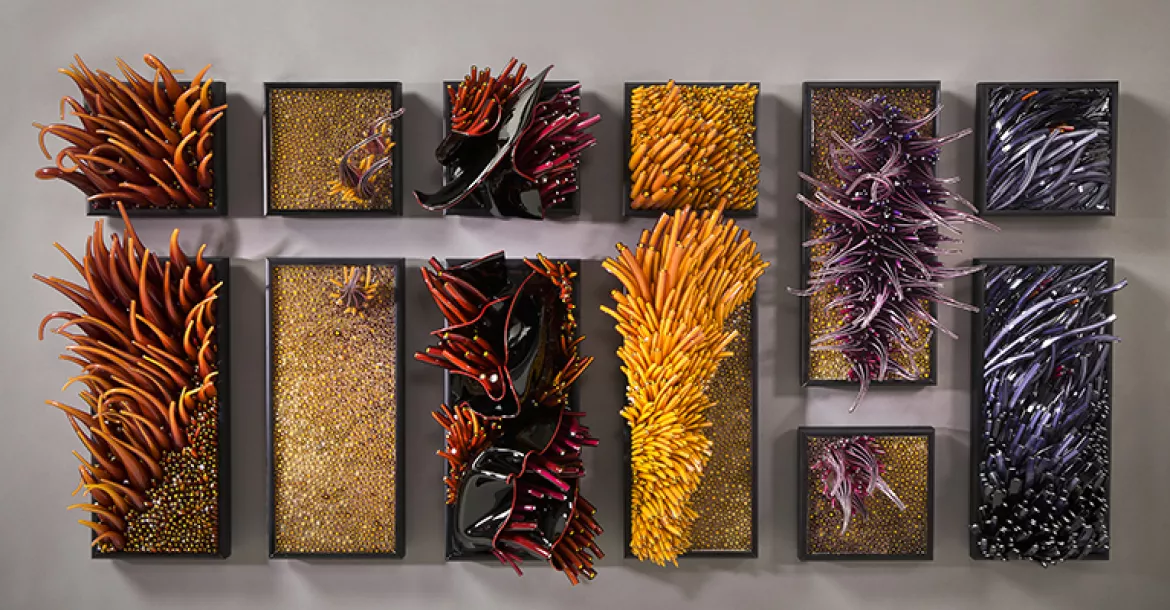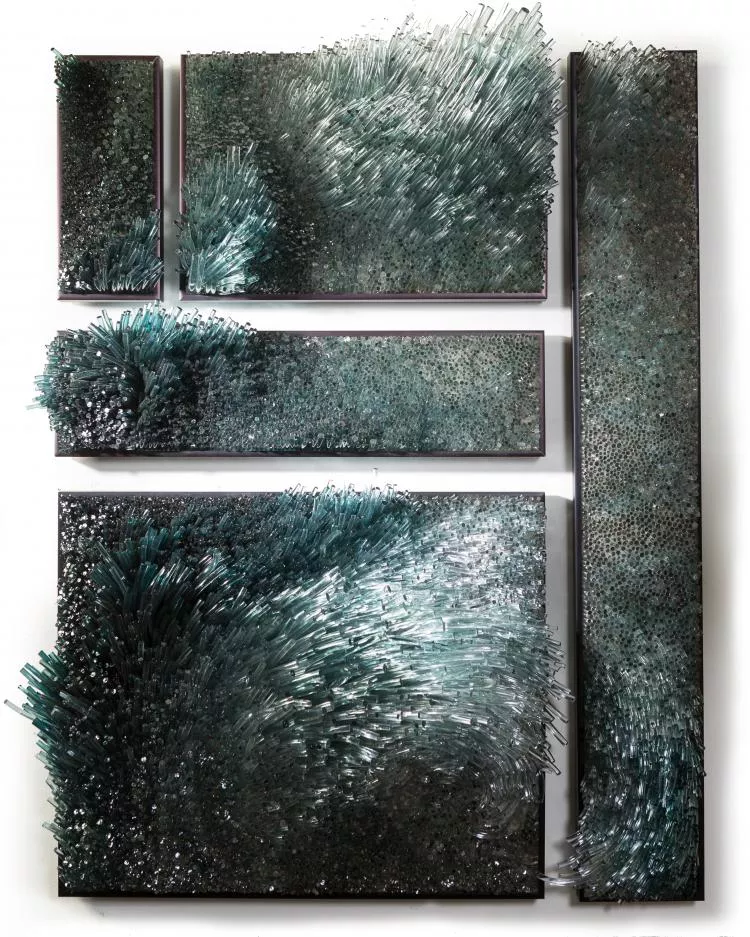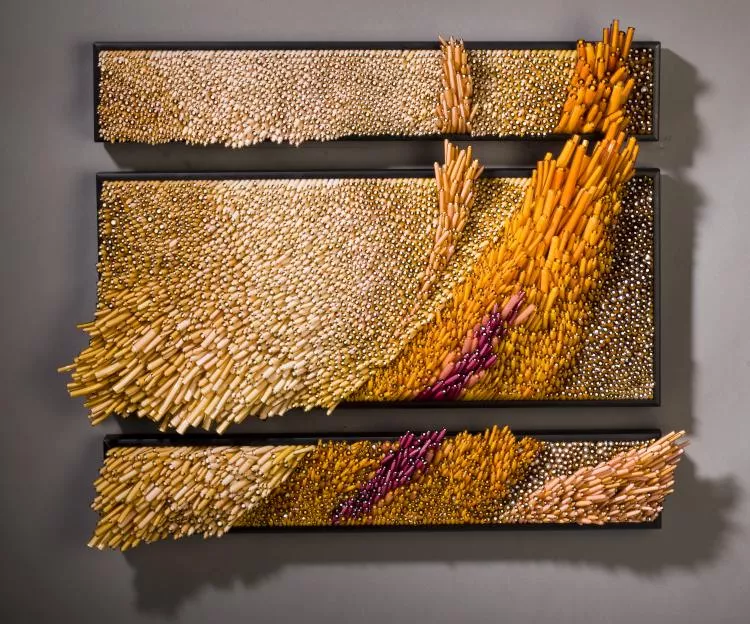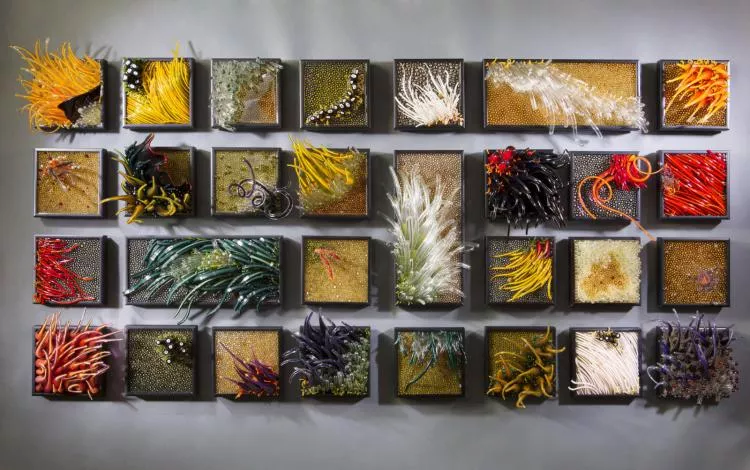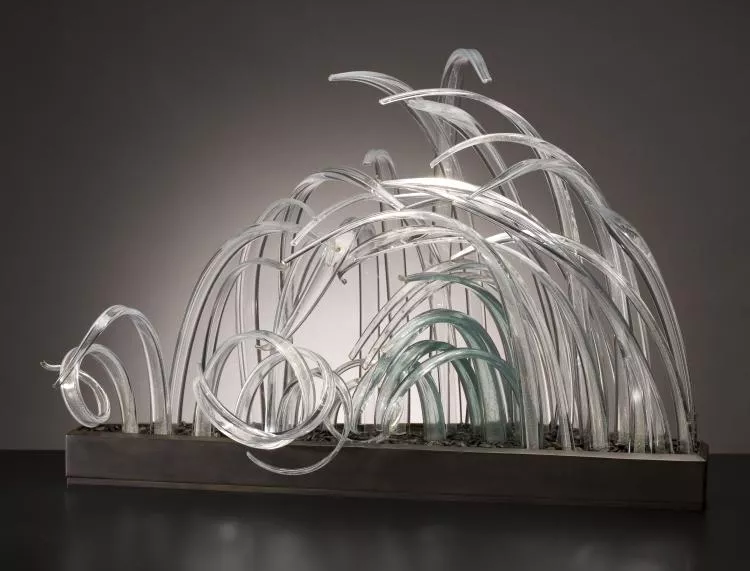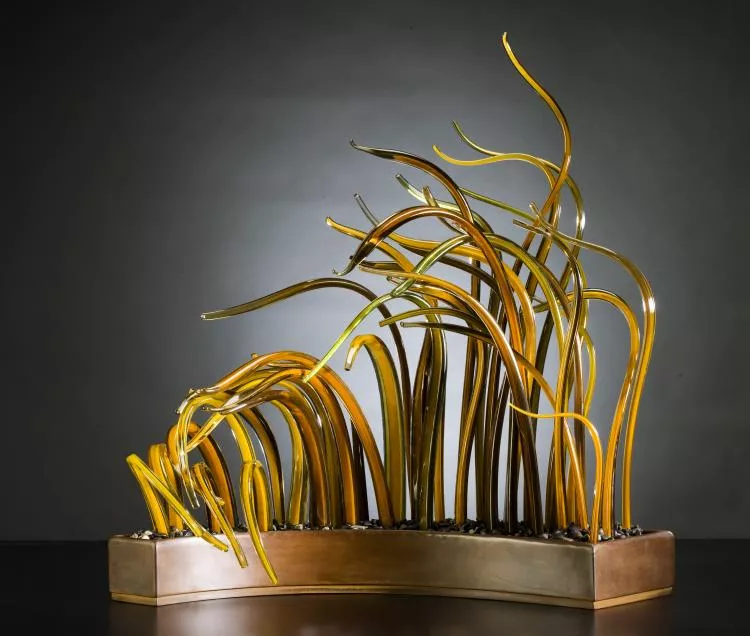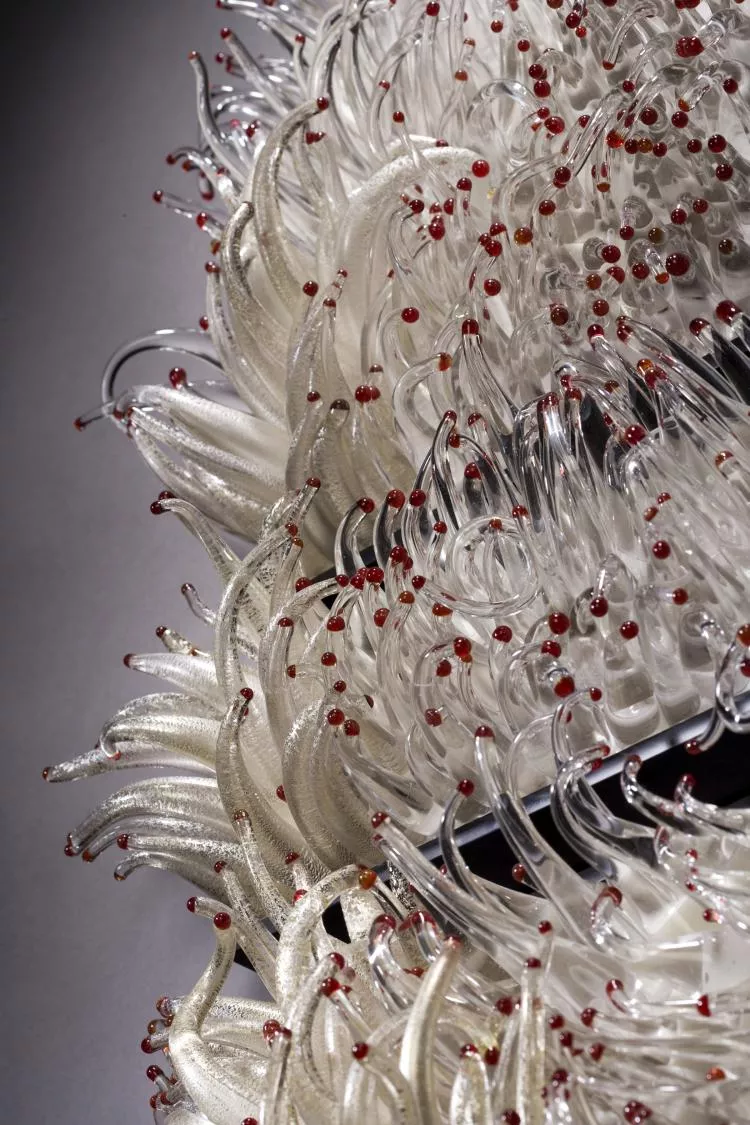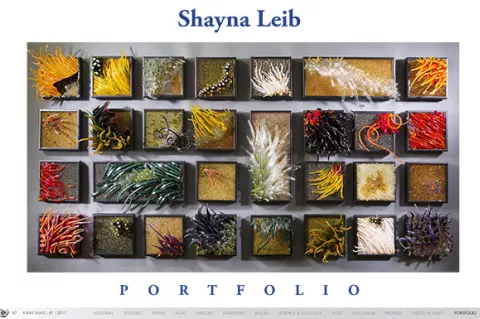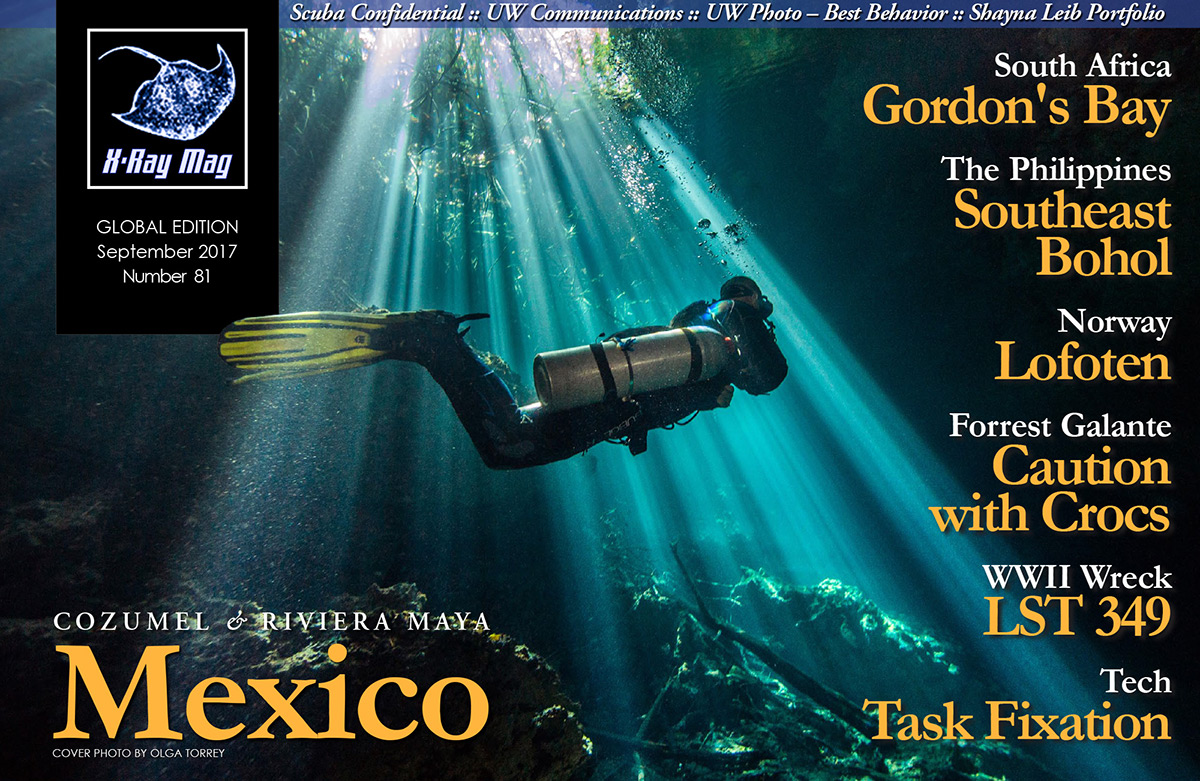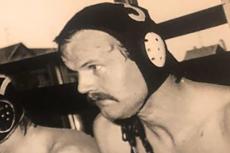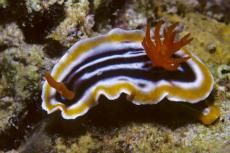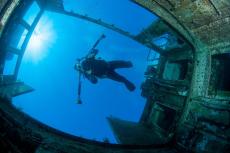
Shayna Leib Portfolio
An avid diver since 2009, American artist Shayna Leib creates stunning glass sculptures that capture the dynamic movement and sublime beauty of wind and wave action upon water and reef life. X-Ray Mag interviewed the artist to find out more about her artwork and perspectives.
Contributed by
X-RAY MAG: Tell us about yourself, your background and how you became a glass artist.
SL: I studied many things in college. My Bachelor of Arts degree is in philosophy and I have minors in existentialist literature, art (glass) and music [at the California Polytechnic State University]. They all played a role in my life, with music and art balancing out the headier subjects. The world is hundreds of years past the Renaissance and having a place for people who want to study all those things. I decided to move forward with graduate studies [at the University of Wisconsin-Madison] in something I really loved, which was glass, and figure the rest out later. It was a surprise to me that I could make a name for myself and a living at being an artist. They say you can’t do that.
X-RAY MAG: Why themes of oceans, waves and marine flora and fauna? How did you come to these themes and how did you develop your style of glass sculpture?
SL: The Wind & Water series first started out as a series that studied motion and patterns of flow. As time passed, I found myself looking more and more to sea life for inspiration. I’m a water baby, and growing up on the Central Coast of California really nurtured my relationship to the sea. Once I became a diver, it really cemented the direction of my work. I still have a love for depicting patterns of flow through the simplicity of a monochromatic piece, but I tend to enjoy creating smaller snapshots of ocean life more.
X-RAY MAG: What is your artistic method or creative process? How do you create your artworks?
SL: My art undergoes three main stages from beginning to end. The first part consists of the hot process. I melt clear glass until it is molten at around 2,100°F and use colorants made from rare earth minerals and metals such as cadmium, gold, cobalt, manganese and selenium. One of my staple items is “cane,” which are long glass rods that I make by hand. I can make around 45 feet of it every 20 minutes, depending on what colors I use. Some of my larger wall pieces made entirely of cane can use three-fourths of a mile of it. Other hot processes include hot sculpting and glass blowing to create different shapes and effects.
The second stage is what I call the “warm” stage and consists of taking all the cane and bringing it up to around 1,200°F so it slumps over curved molds. These are then cut into tens of thousands of individual pieces, which are sorted according to size and color.
The final stage is the assembly, where all the parts are placed one by one into a canvas to elicit movement and flow. It is a very lengthy process from start to finish.
X-RAY MAG: How did you become a diver and how has this influenced your art? In your relationship with the underwater realm, where have you had your favorite experiences?
SL: I became a diver about seven years ago in order to research the creatures that inspire my work, like invertebrates and corals. Pictures can convey a lot of things, but they are never a substitute for experiencing the real thing.
I have to be cliché and say that there is something different and unique about each dive. I’m just happy when I’m in water.
Some dives are ambient and beautiful, like the caverns in Florida or the slopes of Cabo. Some have the most awesome corals, like the Caribbean or Maldives.
My memorable experiences include swimming with a pack of dolphins in Maui, going way too deep in Croatia, bumping into a giant sea turtle in near darkness on a night dive, seeing my first gorgonian, freezing in the most beautiful underwater forest in Catalina, getting stung in the face by a man o’ war jellyfish, getting stung by fire coral, getting stung by electric coral, watching bubbles part duckweed on the surface of a cavern in Florida—that time I got left behind because I was too busy photographing stuff, and the other time I got left behind and in trouble for being too busy photographing stuff.
My best dives are with other photographers, where I can take my time appreciating things. People are in such a hurry looking at fish that they don’t notice the more amazing life forms, and I get tired of being left behind because I’m absorbed in something beautiful. I usually surface having pictures of the most amazing things that everyone missed while they were looking at fish.
X-RAY MAG: What are your thoughts on conservation of sea and freshwater environments and how does your artwork relate to these issues?
SL: Like every diver I know, I’m heartbroken about the state of the ocean and land. People don’t gravitate toward diving that aren’t already in love with the natural world. I have yet to see a coal plant employee on one of the dive boats.
From the mercury dumping in the ‘50s in Minamata Bay [Japan] to the floating islands of plastic, and now the cesium and strontium, oil spills and overfishing—mankind just can’t seem to get to a place of respect for nature or learn from its mistakes. We are a tiny speck on the timeline of the Earth, and our impact is irreversibly enormous as its most detrimental, selfish species. Everyone has a legacy they leave. It’s up to each individual whether or not to take from the planet, and it bears each person’s weight—or to give to it and help its health.
I wouldn’t put myself in the same class as artists directly addressing environmental issues with their art, as mine is merely an appreciation of the natural world. If that appreciation is felt by others, then I am humbled and grateful.
X-RAY MAG: What is the message or experience you want viewers of your artworks to have or understand?
SL: I leave this up to the viewer. Viewing art is personal and I don’t want to force anything on my audience. Only they know what they walk away with.
X-RAY MAG: Why art? Why is it important and what are the challenges and/or benefits of being an artist in the world today?
SL: Artists see and experience the world differently. And with their work, they lend the audience their eyes. I can think of nothing more important in the world than expanding one’s reality and seeing things from another perspective. I believe violence and rigid thinking stem from an inability to understand something, whether it’s another human, an animal or an environment. My perspective focuses on the sea and the creatures in it. It comes from a vantage point of beauty, curiosity and wonder. Glass is a perfect medium to evoke the fragility of life forms.
X-RAY MAG: How do people respond to your works?
SL: I don’t often get to see people react to my work, but when I do, it’s interesting. Most people really want to touch it. That’s their first instinct. Especially people that aren’t from America and perhaps didn’t grow up with the fear of glass instilled in them. It’s an honest response, coming from a place of curiosity.
Collectors often have a different response to my work than the average viewer. I’m interested more in the average viewer. And to be honest, I actually tend to prefer watching other artists view my work. They grasp things I was sure would go unnoticed.
X-RAY MAG: What are your upcoming projects, art courses or events?
SL: I am really excited to have some time off. I’ve been working on a new series that depicts glass desserts called “Patisserie,” and I’ve been having fun with that in-between large projects. It is taking me back to the pure joy of creating objects without having to invest months into them.
X-RAY MAG: Is there anything else you would like to tell our readers about yourself and your artwork?
SL: My earlier works all have bits of cat hair in them (wink). ■
For more information, or to purchase or commission artworks, please visit the artist’s website at: ShaynaLeib.com.
Artists see and experience the world differently. And with their work, they lend the audience their eyes. I can think of nothing more important in the world than expanding one’s reality and seeing things from another perspective.
— Shayna Leib
